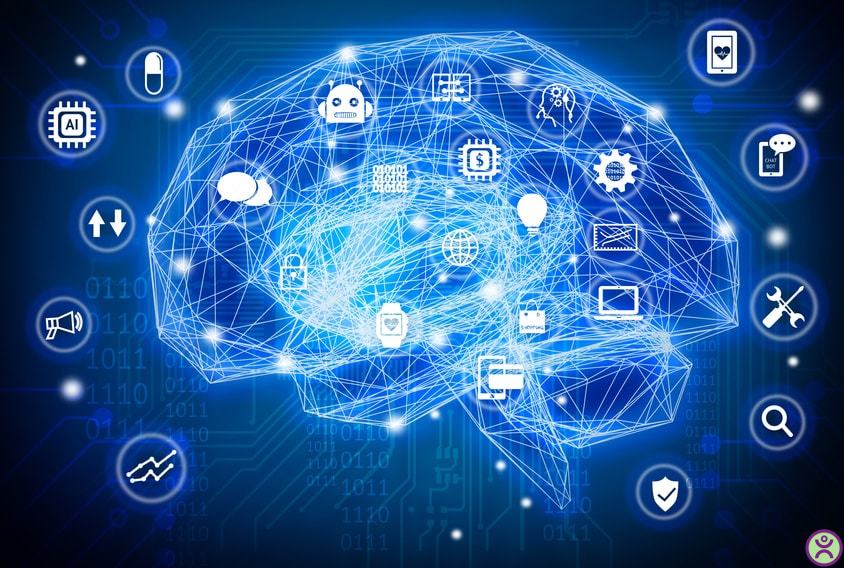Machine learning isn’t so much robotic consciousness as it is smarter crawling of a dataset. The original purpose of computers was to switch words into numbers, used to send (and crack) cyphers during wartime. At its heart, machine learning is the same today, but numbers define a complex and nuanced range of meanings, user intents, and desires.
The databases are exponentially larger; servers full of disks full of gigabytes of information, all interlinked by the web. Machines have a literal universe of numbers to crawl and crunch into outputs that make sense to a person. The algorithms that crawl the data are written to include previous returns to queries correct and incorrect, accurate and inaccurate. The computers aren’t learning per se, humans are learning to write ever-refining ways to explore vast stores of data and developing semiconductors needed for such complex orders.
Predictive, pattern-based analytics
Facebook is where many people, whether they realize or not, subject themselves to machine learning (ML) algorithms. What appears in your news feed is ‘personalized’ based on past behaviors. Not-so-surprisingly, what you “Like” and where you comment will trigger similar information fed in future sessions; but merely stopping your scroll to read has the same effect.
In the context of ML, this is 101-level technology: spinning ‘simple’ statistical analysis into predictive, pattern-based analytics of future human behavior. It’s used across verticals in dozens of applications. It is the base-level interface on which search engines operate that is decades old.
In medicine, doctors use predictive analytics in programs (see: CCA, or common cause analytics) to help them diagnose patients upon intake. First, a nurse or physician’s assistant takes patient data—complaints and descriptors about pain, discomfort, difficulties—which are then entered into a database engine. The engine works, in essence, by normalizing the ‘messy’ initial report, and automating words into ‘neat’ medical terminology. With that, it generates symptoms that a patient may be experiencing, helping doctors ask the right questions probing for a diagnosis.

Digital face recognition
Facebook has permission of over 4 million participants at hand in developing a strain of
ML research called DeepFace. Before Zuckerberg got involved, computer vision could already recognize facial features better than the human mind. Face recognition has always been a benchmark of sorts for machine learning, and until about 2008 or so, computers had failed to deliver.
Does this image belong to this person? Testing in humans performs around 97.5%.
A pair of researchers at the Chinese University of Hong Kong broke through with GaussianFace, an algorithm that, for the first time, was shown to outperform humans (by a percentage point or more!) Based on Kernel Fisher Discriminant Analysis, the GaussianFace algo ‘normalizes’ facial features into a thumbnail image. Measurements of eye position, relative to the nose and corners of the mouth are logged, and further segmented into five smaller patches, or ‘vectors.’ It crunched vectors against a relational database with images assigned to named and unnamed personas.
With Facebook taking over it kicks up research exponentially. GaussianFace developers had a set of 80,000 faces, five times less than Facebook researchers.
Instant translation
Spot translation has been on the development block for decades. Recently, it has improved, taking giant steps forward. There used to be a saying in the industry: E
very time I fire a linguist, my translation program improves — a paraphrase from pioneering IBM researcher, the Czech-born
Frederick Jelinek. How rude, right?
But it was true at the time, and to an extent, remains relevant. For computers, speech recognition has long been part of the problem, a ‘noisy’ channel with ‘messy’ information for computers to sort into workable data. Recognition has improved, and with it, so has instant translation thanks to algo refinement.
Cutting-edge translation programs benefit from computer science neural networks—‘answers’ to previously calculated queries, used in future calculations. Neural networks specifically help a computer identify patterns it may have ‘overlooked’ in past query results.
When you think of language as one giant set of recurring patterns, analytics can predict the next words of a sentence based the words around it. Yes. Just like Google autocomplete.
Translators use a newer form of ML modeling called recurrent neural networking (RNN), wherein the search results gain more nuance in translating from one language to another. The user is given a series of translations and assigned ‘meanings’ to choose from, and their choices refine the algo which are accounted for in future queries.
To oversimplify this in a numeric sense, a dataset then would understand that: 2 + 2 = 4, except when it’s sometimes 5, and sometimes 3. Next time a user inputs 2 + 2, the algo responds with all three options, the likeliest 4 but with the outliers 5 and 3 available for consideration and dependent on the context.
Sentences are chunked out in this manner, using likelihoods of meaning generated by the value of the words around each other. The translations come back with a few options. Pick the closest meaning, and attempt to speak in the foreign tongue of whichever language you’re trying out. You’re helping the algo learn while ordering dinner in a foreign country.













